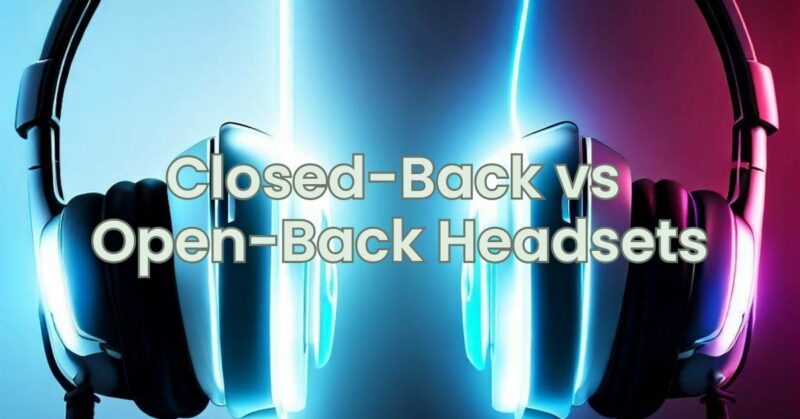When it comes to selecting a headset, one important factor to consider is whether to go for a closed-back or open-back design. These two designs offer distinct audio experiences, each with its own set of advantages and considerations. In this article, we will delve into the differences between closed-back and open-back headsets, helping you make an informed decision based on your audio preferences and usage scenarios.
- Closed-Back Headsets:
- Sound isolation: Closed-back headsets feature ear cups with solid outer shells, effectively blocking external noise and providing better sound isolation. This makes them ideal for use in noisy environments or when you want to focus solely on your audio.
- Enhanced bass response: The closed design of the ear cups allows for better containment of low-frequency sounds, resulting in a more pronounced and impactful bass response.
- Privacy: Closed-back headsets prevent sound leakage, ensuring that your audio doesn’t disturb those around you. This is particularly useful in shared spaces or when using the headset in public settings.
- Open-Back Headsets:
- Natural and spacious soundstage: Open-back headsets have ear cups with perforations or grilles, allowing sound to pass through and interact with the environment. This design creates a more open and natural soundstage, providing a sense of depth and spaciousness to the audio.
- Accurate and detailed audio reproduction: The open-back design minimizes sound reflections within the ear cups, resulting in improved clarity, accuracy, and better representation of instrument separation and nuances.
- Breathability and comfort: The perforated ear cups promote better airflow, reducing heat buildup and providing a more comfortable listening experience during extended sessions.
- Considerations for Both:
- Noise leakage: Open-back headsets allow sound to escape from the ear cups, which can be a consideration if you need to keep your audio private or avoid disturbing others nearby. Closed-back headsets, on the other hand, offer better sound isolation and minimal sound leakage.
- Usage scenarios: Closed-back headsets are well-suited for gaming, studio monitoring, and situations where noise isolation is important. Open-back headsets excel in critical listening, audio production, and environments where a more natural and immersive audio experience is desired.
- Personal preference: Audio preference is subjective, and some individuals may simply prefer the characteristics of one design over the other. It’s essential to consider your personal taste and the intended use of the headset when making a decision.
Here is a table summarizing the pros and cons of closed-back and open-back headsets:
| Feature | Closed-Back Headsets | Open-Back Headsets |
|---|---|---|
| Noise isolation | Good | Poor |
| Bass response | Better | Worse |
| Soundstage | Narrow | Wide |
| Comfort | Can be claustrophobic | More comfortable for long listening sessions |
| Sound leakage | No sound leakage | Some sound leakage |
Choosing between closed-back and open-back headsets boils down to personal preference, audio requirements, and the intended usage scenarios. Closed-back headsets excel in providing sound isolation, enhanced bass response, and privacy. They are suitable for noisy environments or when you want to keep your audio contained. On the other hand, open-back headsets offer a natural and spacious soundstage, accurate audio reproduction, and improved breathability for extended listening comfort. They are favored for critical listening and audio production purposes.
Consider factors such as the desired audio experience, usage environment, need for noise isolation or sound leakage, and personal comfort when making your decision. Testing different models and designs can also help you determine which type of headset aligns best with your audio preferences. Regardless of your choice, both closed-back and open-back headsets have their strengths and are designed to enhance your audio enjoyment in different ways.


